Datasheet
Year, pagecount:2014, 5 page(s)
Language:English
Downloads:3
Uploaded:October 25, 2018
Size:891 KB
Institution:
-
Comments:
University of Nevada School of Medicine
Attachment:-
Download in PDF:Please log in!
Comments
No comments yet. You can be the first!Content extract
Source: http://www.doksinet M e di ca l St ud e n t S t re s s & B ur n o u t University of Nevada School of Medicine managed correctly, stress can lead to high levels of depression, substance abuse, relationship problems, anxiety, and suicide strategies include problem solving, having a positive outlook, social support, and expression of emotions (Dyrbye et al., 2005) (Finkelstein, Brownstein, Scott, & Lan, 2007). Through-out training, medical students encounter a significant amount of stress (Dyrbye, Thomas, Shanafelt, 2005). This is an inevitable and important part of being a student: it motivates and stimulates learning. However, chronic, intense stress can arouse feelings of fear, uselessness, anger, incompetence and guilt. If it is not During medical school, students utilize various coping strategies to manage stress (Dyrbye et al., 2005). These coping strategies determine the influence that stress has on psychological and physical well-being. Disengagement
strategies have negative consequences and are associated with depression, anxiety, and overall poor mental health. Examples of disengagement strategies include problem avoidance, social withdrawal, wishful thinking, and selfcriticism. Engagement strategies have positive consequences and help alleviate anxiety and depression. Examples of engagement Common Stressors Academic : Adjusting to a new learning Psychological: Having expectations. The irrational belief that load, competition for good grades, high doctors should not experience anxie- stakes testing, and an increased level of ty, negative reactions to stress. peers and faculty. unrealistic environment, increased academic work- responsibility. and family and required interactions with Financial: Worry over student loan debt is a common stressor. Physical: Sacrificing exercise and leisure Familial: Relationship issues with time for long hours of lecture, studying, and Clinical:
Exposure to death and dying; parents, children, and partners. Ten- clinical rotations; chronic and acute illness. dealing with patient illness and stress; sions that result from the conflicting rotating through new hospital environ- demands of medical education and ments; having to deal with ethical consid- family. erations. Social: Less interaction with friends Dyrbye et al., 2005; Slavin, Schindler, & Chibnal, 2014;Texas Medical Association, 2000 Spiritual: Difficulty maintaining spiritual practices and dealing with frequent challenges to ones beliefs. Source: http://www.doksinet Me di c al S tu d e nt S tre s s & Bu rno u t Page 2 Tips for Managing Unavoidable Stress (Patient Education Institute, 2013) 1. 2. Plan for expected events with visualization techniques 6. rehearse upcoming stressful events in your mind to better a group of muscles, hold for a few seconds, and then prepare and help you feel more in control. release. This can help
focus chaotic thoughts and release tension. Reframethink positively! Put a difficult situation into a different perspective. 3. 7. Visualize potentially negative situationsDetermine a back8. Get a massageMassage therapy can relieve muscle tension resulting from stress. Relax with deep breathing techniquesCounteract the shallow breathing that stress creates. Breath in deeply through 9. Ask for helpThis is a simple way to alleviate stress and people genuinely want to help! the nose, hold for a few seconds, and then exhale through the mouth. 5. Decompress with stretching and exerciseThis strategy can be done almost anywhere, at anytime. up plan just in case things do not go as planned. 4. Relax tense musclesConcentrate on purposely tensing 10. Seek professional helpSeek professional help before it Quiet your mindFocus on a peaceful thought or a happy gets out of control and results in undesirable conse- memory. quences. Burnout Burnout is characterized by: Burnout is a
state of mental and physical exhaustion associated with work or care-giving activities (1) Emotional exhaustion loss of enthusiasm for work, and results (2) Depersonalization– treat- from chronic stress that is not ing people as if they are ob- appropriately jects, and, (Ishak et al., 2013) dealt (Meldrum, 2010). with (3) Low personal accomplishmentthe feeling that work is no longer meaningful. (Meldrum, 2010; Shanafelt, 2009). http://myburnoutthing.com/definition-of-burnout/why-bother-with-a-definition-of-burnout/ Risk Factors for Burnout (Texas Medical Association, 2000) Perfectionism Need for control Belief that revealing emotions Unwillingness to ask for help makes one weak Belief that physicians do not have needs Belief that patients should Type A personality: overa- always come before one’s chievers own health Source: http://www.doksinet Page 3 Stages of Burnout (as cited in Texas Medical Association, 2000)
Stage 1: Stress Arousal Irritability Bruxism (excessive grinding of teeth) Insomnia Forgetfulness, poor concentration GI disorders Stage 2: Energy Conservation Stage 3: Exhaustion The three stages Chronic sadness or depression of burnout usually Suicidal ideation occur in sequence. Chronic GI problems Decreased sex drive Chronic headaches stages of burnout Fatigue Social isolation can be stopped at Social withdrawal Substance abuse disorders any point. Two or Increased substance abuse Unethical behaviors (disruptive behavior, boundary violations) symptoms at any Lateness, procrastination Excessive time off Headaches Self-medication However, progression through the more of these stage indicates burnout. Strategies for Preventing Burnout: Maintain Balance! Maintain physical well-being Use leisure activities to reduce stress leagues Exercise
Eat healthy Limit work hours Rest and maintain adequate sleep Be honest with yourself and learn to for- schedule family Seek professional helpit is available to you and completely confidential after an adverse event chores Learn to set priorities Develop professional relationships with Schedule time-out periods for vacations, peers and colleagues Encourage teamwork and share Consistently take time to reflect on perand identify needed Regenerate with regular quiet times, meditation, prayer, journaling, religious services, spirituality practices, or time in Pursue hobbies! nature ad- changes Appreciate the good things in life and work change for the future and expertise maintain a sense of balance situations expectationsreasonably medical profession Reflection & Spirituality sonal Be open to feedback from peers and nurture your creative abilities and ties maintain flexibility to make necessary
Engage in enjoyable activities that wishful thinking and accept external reali- Recognize when change is necessary and Share experiences Acceptance and realismrefrain from dress the challenges and downsides of the power naps, meals and snacks workloads Maintain Positive Attitudes Realistic spouse, and friends use it to enhance your knowledge Schedule time to take care of routine Spend quality time with family, Set limits give so that you are able to move forward Foster relationships with friends and ences with close friends, family, and col- Debrief with others Humor & Laughter A good sense of humor can help you cope with stress Exchange jokes and humorous stories to create a positive environment Share your thoughts, feelings, and experi- (Meldrum, 2010; Texas Medical Association, 2000; Swetz, Harrington, Matsuyama, Shanafelt, & Lyckholm, 2009; Zwack & Schweitzer, 2013) Source:
http://www.doksinet On Campus Resources Reno UNR Student Health Center Redfield Building M/S 196 Reno, NV, 89557 Tel: 775-784-6598 Hours: Monday through Thursday, 8am-7pm with Walk-In hours 8am-6pm Friday, 8am-5pm with Walk-in hours 8am-4pm Closed Wednesday 8am-9am for staff meeting Closed on weekends and holidays After hours: After hours care is not available at the Student Health Center and they do not have a doctor on call. If you need to be seen emergently, please call 911 and go to the nearest Emergency Department. UNR Counseling Services 202 Thompson Building Reno, NV 89557 Tel: 775-784-4648 On call crisis counselor, after hours: 775-297-8315 Hours: Monday-Thursday, 8am-8pm Friday, 8am-8pm Closed on weekends and holidays if you are experiencing a crisis, you can call or walk-in to Counseling Services between the hours of 8am5pm Monday through Friday. Let the receptionist know that you are requesting a same-day emergency appointment. A counselor will briefly meet with you to
determine the best course of action (scheduling an intake appointment with you, referring you to other resources, etc.) Las Vegas UNLV Student Health Center Student Recreation and Wellness center (SRWC), 1st floor Phone: 702-895-3370 Hours: MondayThursday, 8am6pm Friday, 9am5pm Closed on weekends and holidays UNLV Counseling and Psychological Services SRWC, enter through Student Health Center, 1st floor Phone: 702-895-3627 Hours: MondayThursday, 8am6pm Friday, 9am6pm Closed on weekends and holidays Counseling and Psychological Services (CAPS) has on-call counselors to provide crisis intervention services on a walk-in basis during office hours. Students should come into CAPS or call at 895-3627 and tell the receptionist that they are having an emergency and need to speak to the counselor immediately. Off Campus Resources UNSOM Counseling Referral ListLink http://medicine.nevadaedu/asa/student-affairs/health-and-wellness/ wellness-and-health-promotion/mental-health Source:
http://www.doksinet References Dyrbye, L. N, Thomas, M R, & Shanafelt, T D (2005) Medical student distress: Causes, consequences, and proposed solutions. Mayo Clinic Proceedings, 80(12), 1613-1622 Finkelstein, C., Brownstein, A Scott, C & Lan, Y (2007) Anxiety and stress reduction in medical education: An Intervention. Medical Education, 41, 258-264 Ishak, W., Nikravesh, R Lederer, S, Perry, R, Ogunyemi, D, & Bernstein, C (2013) Burnout in medical students: A systematic review The Clinical Teacher, 10, 242-245 Meldrum, H. (2010) Exemplary physicians’ strategies for avoiding burnout The Health Care Manager, 29(4), 324-331 The Patient Education Institute. (2013) Managing stress Retrieved from http://wwwnlmnihgov/medlineplus/tutorials/ managingstress/htm/index.htm Shanafelt, T. D (2009) Enhancing meaning in work: A prescription for preventing physician burnout and promoting patientcentered care The Journal of American Medicine Association, 302(12), 1338- 1340 Swetz, K. M,
Harrington, S E, Matsuyama, R K, Shanafelt, T D, & Lyckholm, L J (2009) Strategies for avoiding burnout in hospice and palliative medicine: Peer advice for physicians on achieving longevity and fulfillment. Journal of Palliative Medicine, 12(9), 773-777 Texas Medical Association. (2013) Medical Student Stress and Burnout Retrieved from http://wwwtexmedorg/ WorkArea/DownloadAsset.aspx?id=26900 Zwack, J. & Schweitzer, J (2013) If every fifth physician is affected by burnout, what about the other four? Resilience strategies of experienced physicians Academic Medicine, 88(3), 382-389
strategies have negative consequences and are associated with depression, anxiety, and overall poor mental health. Examples of disengagement strategies include problem avoidance, social withdrawal, wishful thinking, and selfcriticism. Engagement strategies have positive consequences and help alleviate anxiety and depression. Examples of engagement Common Stressors Academic : Adjusting to a new learning Psychological: Having expectations. The irrational belief that load, competition for good grades, high doctors should not experience anxie- stakes testing, and an increased level of ty, negative reactions to stress. peers and faculty. unrealistic environment, increased academic work- responsibility. and family and required interactions with Financial: Worry over student loan debt is a common stressor. Physical: Sacrificing exercise and leisure Familial: Relationship issues with time for long hours of lecture, studying, and Clinical:
Exposure to death and dying; parents, children, and partners. Ten- clinical rotations; chronic and acute illness. dealing with patient illness and stress; sions that result from the conflicting rotating through new hospital environ- demands of medical education and ments; having to deal with ethical consid- family. erations. Social: Less interaction with friends Dyrbye et al., 2005; Slavin, Schindler, & Chibnal, 2014;Texas Medical Association, 2000 Spiritual: Difficulty maintaining spiritual practices and dealing with frequent challenges to ones beliefs. Source: http://www.doksinet Me di c al S tu d e nt S tre s s & Bu rno u t Page 2 Tips for Managing Unavoidable Stress (Patient Education Institute, 2013) 1. 2. Plan for expected events with visualization techniques 6. rehearse upcoming stressful events in your mind to better a group of muscles, hold for a few seconds, and then prepare and help you feel more in control. release. This can help
focus chaotic thoughts and release tension. Reframethink positively! Put a difficult situation into a different perspective. 3. 7. Visualize potentially negative situationsDetermine a back8. Get a massageMassage therapy can relieve muscle tension resulting from stress. Relax with deep breathing techniquesCounteract the shallow breathing that stress creates. Breath in deeply through 9. Ask for helpThis is a simple way to alleviate stress and people genuinely want to help! the nose, hold for a few seconds, and then exhale through the mouth. 5. Decompress with stretching and exerciseThis strategy can be done almost anywhere, at anytime. up plan just in case things do not go as planned. 4. Relax tense musclesConcentrate on purposely tensing 10. Seek professional helpSeek professional help before it Quiet your mindFocus on a peaceful thought or a happy gets out of control and results in undesirable conse- memory. quences. Burnout Burnout is characterized by: Burnout is a
state of mental and physical exhaustion associated with work or care-giving activities (1) Emotional exhaustion loss of enthusiasm for work, and results (2) Depersonalization– treat- from chronic stress that is not ing people as if they are ob- appropriately jects, and, (Ishak et al., 2013) dealt (Meldrum, 2010). with (3) Low personal accomplishmentthe feeling that work is no longer meaningful. (Meldrum, 2010; Shanafelt, 2009). http://myburnoutthing.com/definition-of-burnout/why-bother-with-a-definition-of-burnout/ Risk Factors for Burnout (Texas Medical Association, 2000) Perfectionism Need for control Belief that revealing emotions Unwillingness to ask for help makes one weak Belief that physicians do not have needs Belief that patients should Type A personality: overa- always come before one’s chievers own health Source: http://www.doksinet Page 3 Stages of Burnout (as cited in Texas Medical Association, 2000)
Stage 1: Stress Arousal Irritability Bruxism (excessive grinding of teeth) Insomnia Forgetfulness, poor concentration GI disorders Stage 2: Energy Conservation Stage 3: Exhaustion The three stages Chronic sadness or depression of burnout usually Suicidal ideation occur in sequence. Chronic GI problems Decreased sex drive Chronic headaches stages of burnout Fatigue Social isolation can be stopped at Social withdrawal Substance abuse disorders any point. Two or Increased substance abuse Unethical behaviors (disruptive behavior, boundary violations) symptoms at any Lateness, procrastination Excessive time off Headaches Self-medication However, progression through the more of these stage indicates burnout. Strategies for Preventing Burnout: Maintain Balance! Maintain physical well-being Use leisure activities to reduce stress leagues Exercise
Eat healthy Limit work hours Rest and maintain adequate sleep Be honest with yourself and learn to for- schedule family Seek professional helpit is available to you and completely confidential after an adverse event chores Learn to set priorities Develop professional relationships with Schedule time-out periods for vacations, peers and colleagues Encourage teamwork and share Consistently take time to reflect on perand identify needed Regenerate with regular quiet times, meditation, prayer, journaling, religious services, spirituality practices, or time in Pursue hobbies! nature ad- changes Appreciate the good things in life and work change for the future and expertise maintain a sense of balance situations expectationsreasonably medical profession Reflection & Spirituality sonal Be open to feedback from peers and nurture your creative abilities and ties maintain flexibility to make necessary
Engage in enjoyable activities that wishful thinking and accept external reali- Recognize when change is necessary and Share experiences Acceptance and realismrefrain from dress the challenges and downsides of the power naps, meals and snacks workloads Maintain Positive Attitudes Realistic spouse, and friends use it to enhance your knowledge Schedule time to take care of routine Spend quality time with family, Set limits give so that you are able to move forward Foster relationships with friends and ences with close friends, family, and col- Debrief with others Humor & Laughter A good sense of humor can help you cope with stress Exchange jokes and humorous stories to create a positive environment Share your thoughts, feelings, and experi- (Meldrum, 2010; Texas Medical Association, 2000; Swetz, Harrington, Matsuyama, Shanafelt, & Lyckholm, 2009; Zwack & Schweitzer, 2013) Source:
http://www.doksinet On Campus Resources Reno UNR Student Health Center Redfield Building M/S 196 Reno, NV, 89557 Tel: 775-784-6598 Hours: Monday through Thursday, 8am-7pm with Walk-In hours 8am-6pm Friday, 8am-5pm with Walk-in hours 8am-4pm Closed Wednesday 8am-9am for staff meeting Closed on weekends and holidays After hours: After hours care is not available at the Student Health Center and they do not have a doctor on call. If you need to be seen emergently, please call 911 and go to the nearest Emergency Department. UNR Counseling Services 202 Thompson Building Reno, NV 89557 Tel: 775-784-4648 On call crisis counselor, after hours: 775-297-8315 Hours: Monday-Thursday, 8am-8pm Friday, 8am-8pm Closed on weekends and holidays if you are experiencing a crisis, you can call or walk-in to Counseling Services between the hours of 8am5pm Monday through Friday. Let the receptionist know that you are requesting a same-day emergency appointment. A counselor will briefly meet with you to
determine the best course of action (scheduling an intake appointment with you, referring you to other resources, etc.) Las Vegas UNLV Student Health Center Student Recreation and Wellness center (SRWC), 1st floor Phone: 702-895-3370 Hours: MondayThursday, 8am6pm Friday, 9am5pm Closed on weekends and holidays UNLV Counseling and Psychological Services SRWC, enter through Student Health Center, 1st floor Phone: 702-895-3627 Hours: MondayThursday, 8am6pm Friday, 9am6pm Closed on weekends and holidays Counseling and Psychological Services (CAPS) has on-call counselors to provide crisis intervention services on a walk-in basis during office hours. Students should come into CAPS or call at 895-3627 and tell the receptionist that they are having an emergency and need to speak to the counselor immediately. Off Campus Resources UNSOM Counseling Referral ListLink http://medicine.nevadaedu/asa/student-affairs/health-and-wellness/ wellness-and-health-promotion/mental-health Source:
http://www.doksinet References Dyrbye, L. N, Thomas, M R, & Shanafelt, T D (2005) Medical student distress: Causes, consequences, and proposed solutions. Mayo Clinic Proceedings, 80(12), 1613-1622 Finkelstein, C., Brownstein, A Scott, C & Lan, Y (2007) Anxiety and stress reduction in medical education: An Intervention. Medical Education, 41, 258-264 Ishak, W., Nikravesh, R Lederer, S, Perry, R, Ogunyemi, D, & Bernstein, C (2013) Burnout in medical students: A systematic review The Clinical Teacher, 10, 242-245 Meldrum, H. (2010) Exemplary physicians’ strategies for avoiding burnout The Health Care Manager, 29(4), 324-331 The Patient Education Institute. (2013) Managing stress Retrieved from http://wwwnlmnihgov/medlineplus/tutorials/ managingstress/htm/index.htm Shanafelt, T. D (2009) Enhancing meaning in work: A prescription for preventing physician burnout and promoting patientcentered care The Journal of American Medicine Association, 302(12), 1338- 1340 Swetz, K. M,
Harrington, S E, Matsuyama, R K, Shanafelt, T D, & Lyckholm, L J (2009) Strategies for avoiding burnout in hospice and palliative medicine: Peer advice for physicians on achieving longevity and fulfillment. Journal of Palliative Medicine, 12(9), 773-777 Texas Medical Association. (2013) Medical Student Stress and Burnout Retrieved from http://wwwtexmedorg/ WorkArea/DownloadAsset.aspx?id=26900 Zwack, J. & Schweitzer, J (2013) If every fifth physician is affected by burnout, what about the other four? Resilience strategies of experienced physicians Academic Medicine, 88(3), 382-389
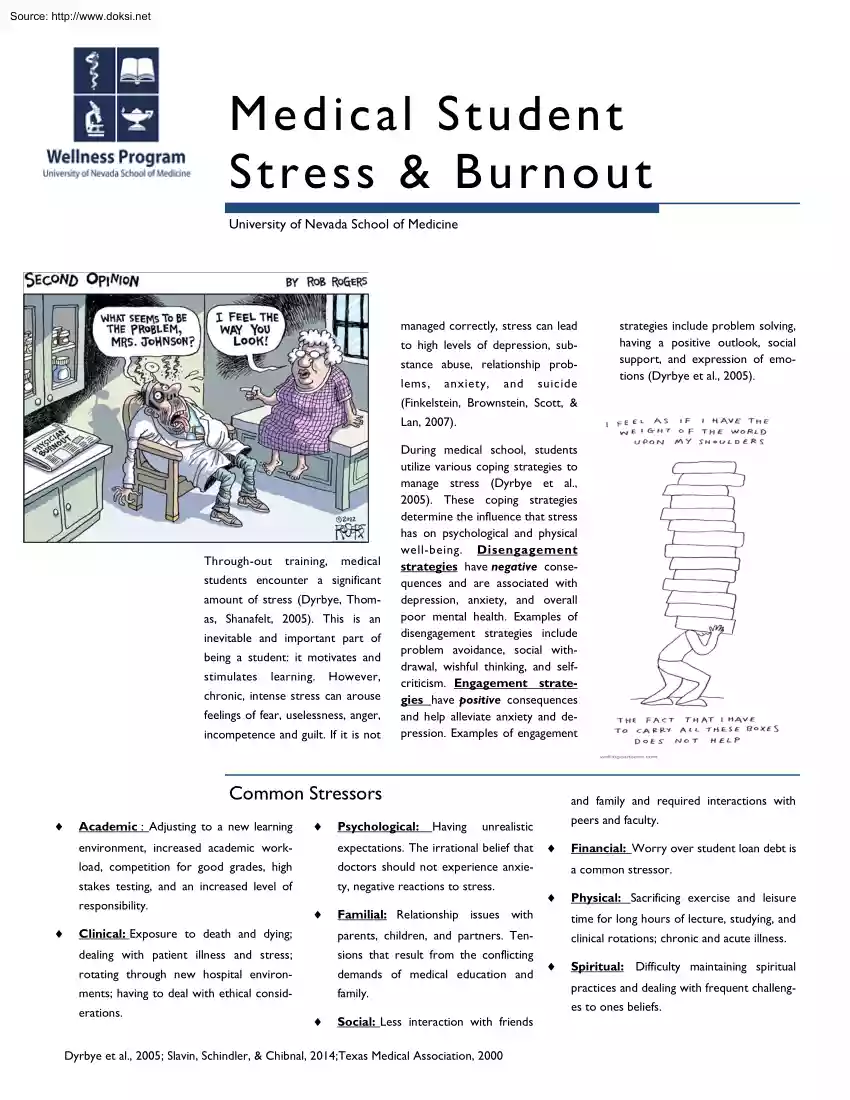
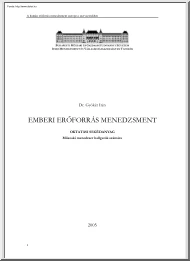
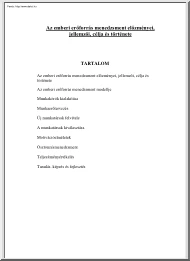
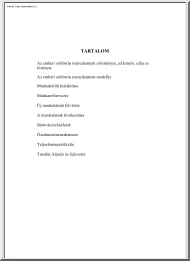
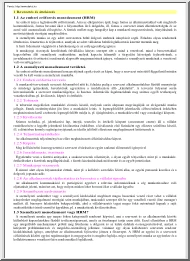
 When reading, most of us just let a story wash over us, getting lost in the world of the book rather than paying attention to the individual elements of the plot or writing. However, in English class, our teachers ask us to look at the mechanics of the writing.
When reading, most of us just let a story wash over us, getting lost in the world of the book rather than paying attention to the individual elements of the plot or writing. However, in English class, our teachers ask us to look at the mechanics of the writing.